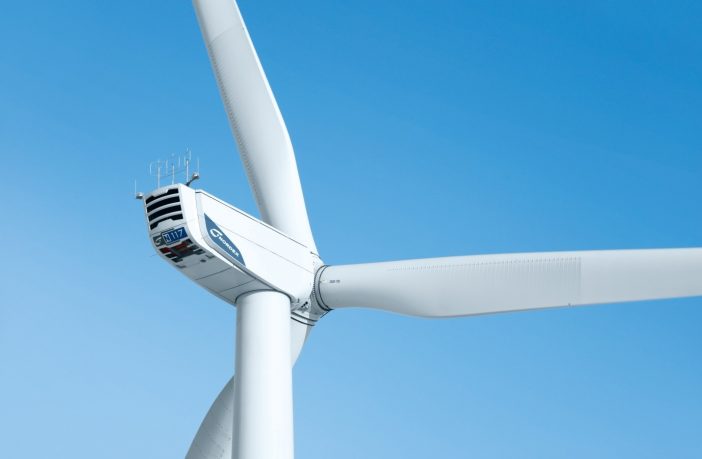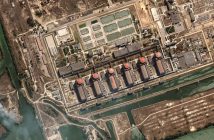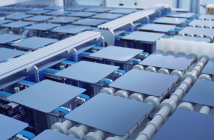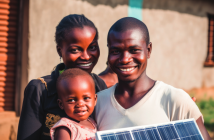- The first of a series of webinar’s, under SAWEA’s Windaba banner, launched this month.
- The inaugural topic addressed the Role of Wind Power in SA’s Economic Recovery, post-COVID-19, which will require economic stimulus from the SA government.
The panel included both local and international industry leaders in the wind power and economic sectors, namely Hulisani CEO: Marubini Raphulu; Enertrag South Africa CEO: Dr Tobias Bishof-Niemz; Meridian Economics MD: Dr Grové Steyn; and Global Wind Energy Council’s (GWEC) Growth and Partnerships Director: Emerson Clarke.
South Africa’s Marubini Raphulu, call for greater innovation and a focus on energy efficiency as well as highlighting the need for upskilling to help drive job creation in the transitioning energy sector. Additionally, he puts forward a case for the local wind power sector to boost local manufacturing and supply sectors, which will help drive the resilience of African economies, not just South Africa.
GWEC’s Emerson Clarke, pointed out the impact of COVID-19 on the world’s energy sector and that the current crisis, threatens to overshadow the climate emergency. He urged that post-pandemic recovery could and should indeed be a green recovery, and that a number of recent policy developments in the European Union, USA, Poland, Vietnam, India, South Korea and Chile demonstrated support for renewables in their economic recovery plans.
The key take out from all panellists, was the strong opinion that the South African government needs to accelerate the implementation of its renewable-energy-heavy Integrated Resource Plan 2019 (IRP 2019) as part of the country’s post-Covid-19 economic recovery package. A number of the panellists concurred that policy and regulatory constraints currently confronting renewables developers in South Africa is a hurdle that needs to be overcome to release jobs, investments, energy supply and the opportunity to relook at the energy supply chain and structure.
To look at what this means for South Africa, and where we currently stand, following the most recently gazetted IRP 2019, has shown very little movement since late last year. In April, the National Energy Regulator of South Africa (NERSA) officially launched the public participation process by releasing two consultation papers for public comments. The Wind sector sees this as significant progress, as it brings us a step closer to the procurement of new generation capacity that the country desperately needs.
SAWEA DRAWS IN EXPERTS TO DISCUSS INDUSTRY’S ROLE IN POST-COVID-19 ECONOMY
The IRP 2019 currently anticipates that 1 600 MW of new wind will be added yearly from 2022 to 2030 and that 1 000 MW of utility-scale solar PV would be deployed in most years over the same period.
Meridian Economics MD Dr Grové Steyn, who is currently modelling the economic impact of such an acceleration with the Council for Scientific and Industrial Research (CSIR), argues that a large renewables-led green stimulus was one of the few substantial recovery opportunities available that did not require any fiscal resources. Steyn calls for political will and policy certainty, to push for an accelerated renewables roll-out to deliver material economic and social benefits, while also bolstering much-needed energy security. This will create immediate economic and employment opportunities, while opening up prospects for the domestic manufacturing of renewables components. Additionally, this roll-out will increase capital expenditure over the period to 2030 and lead to thousands of much needed jobs, which will become even more crucial post-COVID-19.
Dr Tobias Bishof-Niemz, estimates that the wind sector alone would invest between R300- and R400-billion and create 25 000 construction and operations jobs in South Africa by 2030 should the 1 600-MW allocation be sustained. However, there is an opportunity to increase this green stimulus plan to a yearly allocation of 3 000 MW, which would translate the investment value to between R600- and R800-billion, while almost 50 000 construction and operations jobs would be created. Jobs will also come from the manufacture of towers, blades, nacelles and gearboxes, in addition to the lion share of wind-related jobs that come from the construction and operation of wind farms.
There are currently 12 wind farm projects under construction, which are due to being reaching Commercial Operations later this year. Although they were selected back in 2014, the flow of investments wasn’t activated. In 2018 the power purchase agreements were signed and these projects commenced construction. The total investment of these 12 wind farms, which accounts for 1.4 GW of clean energy for the country, amounts to around R 35.9 billion.
It is important to consider, that the country’s economy is only now starting to emerge from the slowdown created by the COVID-19 lockdown, and South Africa is still technically in an energy crisis. Once the economy gets back on track the energy demand will rise again and we will be right back to the pre-lockdown energy crisis. Therefore, SAWEA would like to urge government to fast-track the issuing of REIPPPP Round 5 in order to close the energy supply gaps created by Eskom’s reduced energy availability factor, and the decommissioning plan tabled in the IRP 2019. The advantage of rolling out the renewables is that it delivers power on time and on budget within a period of 18 to 24 months, so it is the most feasible option to close the short term capacity gap.
SAWEA DRAWS IN EXPERTS TO DISCUSS INDUSTRY’S ROLE IN POST-COVID-19 ECONOMY
On the whole, the wind energy sector is gearing up for the next procurement round. The industry is ready, and has been ready for the past 5 years. There are several projects that have already been developed, achieving all necessary authorisations, all that is remaining is submission in the next bidding round, which we expect should be issued before the end of 2020.
Author: Bryan Groenendaal
Source: SAWEA











